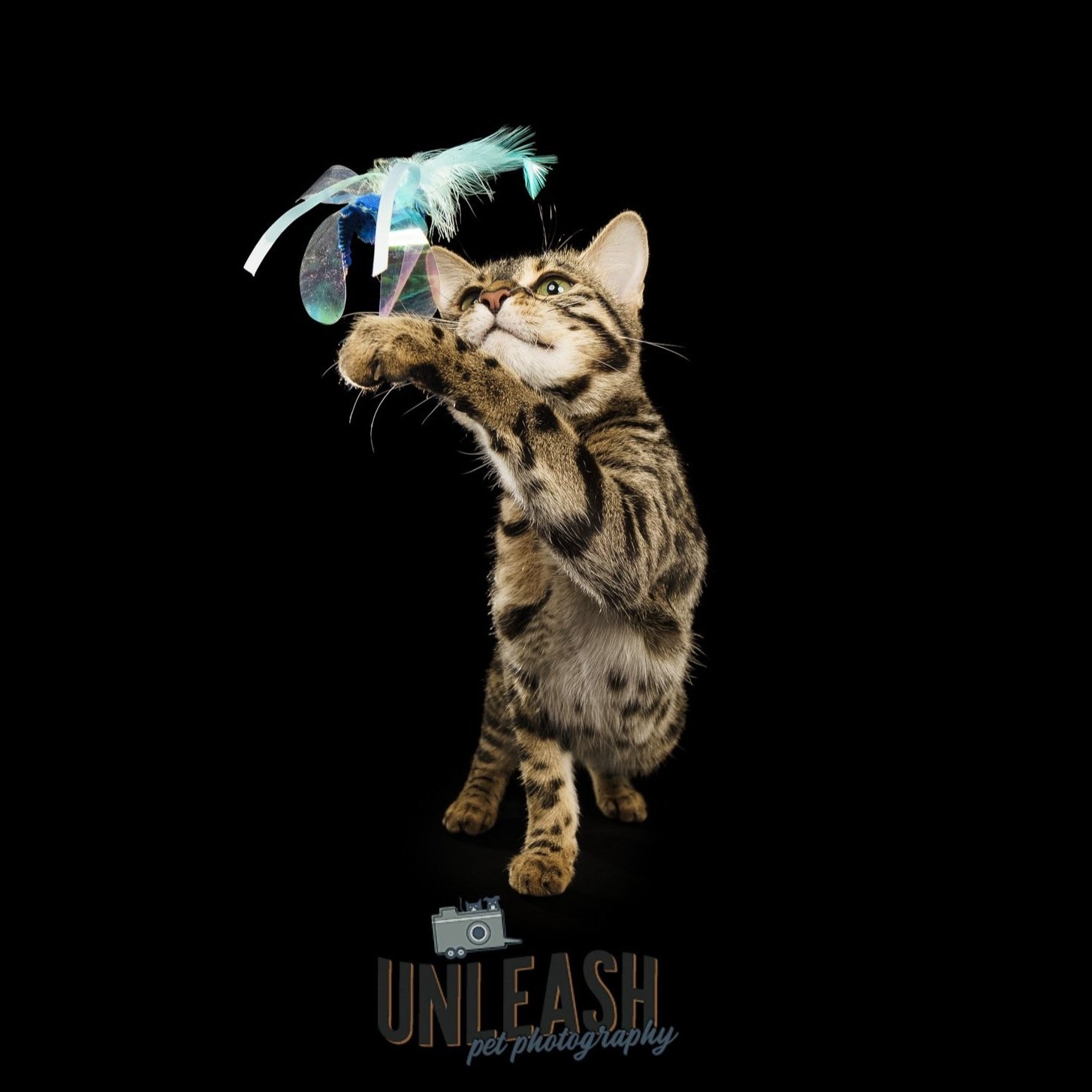Eco-Friendly Cat Owner
/How to be an eco-friendly cat owner
If you are worried about our planet’s health, you can feel reassured by the fact that even small changes have a significant impact.
This is especially true for cat owners. In 2022, according to a nationwide survey, there were estimated to be approximately 8.5 million cats in Canadian households. That is an average of 1.8 cats per household. Imagine if each one of those households made one or two earth-friendly changes to their pet care routine. By making the switch to eco-friendly cat ownership, you can start doing your part to help Earth heal and avoid unnecessary pollution.
Caring for a pet is a rewarding experience that doesn't have to cost the earth.
So, whether you’re seasoned in the art of caring for furry companions, or you’re taking the first steps to becoming a pet owner, here are some tips to help you minimize your pet’s environmental pawprint.
Reduce Use of Cat-Related Plastic
Plastic pollution has become one of our most pressing environmental concerns. Plastic requires production of petrochemicals that take an estimated 400 years to break down.
Here are ways cat parents can limit plastic use:
Buying cat food and litter in bulk can be friendly to your wallet and the planet. Also, bring reusable storage containers to refill if possible.
Choose non-plastic toys. Instead, look for toys made from recycled or sustainable materials like bamboo or hemp. Consider paying a little bit more for well-made toys that last longer.
Repurpose cardboard boxes, tin foil, fabric rags, and other disposable materials into cat toys. Challenge your kids or yourself by making one of these DIY cat toys.
Buy ceramic or metal food and water dishes instead of hard plastic.
Check out online cat forums or second-hand stores when looking for cat toys, beds, or climbing structures. Reuse and recycle to avoid buying new.
Use of Parasiticides
There is a growing concern about the potential harm that parasiticides used on pets for fleas, ticks and worms is causing to our environment. More research needs to be done, but there are a few steps we can take to mitigate harm to our environment now.
Like all medicines, parasiticides should be used only when necessary.
We should use the narrowest spectrum drug that will do the job.
We should not over-treat. Not all cats need year-round flea and tick cover. Many cats need roundworming only every 3 months, not every month.
Properly Dispose of Kitty Waste
The way you deal with your cat’s waste is one of the most important choices you make as a pet owner. Unfortunately, the clay-based litter available in most supermarkets and pet stores is not biodegradable. Instead, the clay must be strip-mined, a practice which destroys our forests and wild habitats which leads to soil loss and deforestation.
Switch to a planet-friendly cat litter made from corn dust, wood sawdust, or post-consumer paper waste. If you feel ambitious (and don’t have multiple cats), consider trying a DIY option made out of newspaper, sawdust, or woodchips. Here is a simple DIY cat litter solution using shredded newspaper/flyers.
Use compostable non-plastic bags for cleaning out your cat’s litter box and as litter box liners.
Never flush clay cat litter. Some toxins and chemicals in clay litter can contaminate the water supply.
Never compost cat litter in your yard as cat excrement contains parasites which cause Toxoplasm infections in humans. Cats are the only species who shed this parasite in their feces. These dangerous pathogens can also leach into our soil and waterways.
Buy planet-friendly pet food
Cats are carnivores, so you can’t remove meat from their diet entirely. Likewise, vegan diets are unhealthy and even dangerous for cats.
Yet, there are some planet-friendly food swaps you can make to benefit the environment without putting your cat’s health in jeopardy.
Choose cat foods containing chicken and fish instead of beef or lamb. Beef and lamb farming produces more carbon emissions, requires more energy-intensive foods, and generates more manure than chickens.
Pet food also requires a lot of oil, energy and water for processing, packaging, and transportation.
So, to keep your pet’s environmental “pawprint” small, buy pet food in bulk quantities whenever possible.
Make homemade treats
With plenty of inspiration and recipes online, there’s never been a better time to have a go at making your own pet treats! Making your own and storing them in a reusable, resealable container can be a great way of skipping the wasteful packaging that comes along with most commercially available pet treats.
Keep your Cat indoors
Scientists estimate that free-ranging domestic cats kill 1.3 – 4 billion birds and 6.3 – 22.3 billion mammals annually. House cats threaten many endangered songbirds and are responsible for reducing biodiversity and habitat for threatened species.
Even if you can’t bear to keep your cat indoors, you can limit the threat they pose by keeping them indoors during the early morning and evening hours when wildlife is most active.
Also, outfitting your cat with a quick-release collar with a bell will alert prey that they are on the hunt.
You might consider building a Catio so the wildlife will stay safe, but your kitty still gets to experience the sounds and smells of the outdoors.
Clean up with Pet Safe Products
From all-purpose spray to carpet cleaner, eco-friendly brands offer a range of products that refrain from using harsh chemicals and solvents that get washed down the drain and into our rivers, streams and oceans. These plant-based products are also safe for use around kids and pets. Alternatively, mixing baking soda and vinegar to form a paste makes a great non-toxic abrasive for scrubbing surfaces in your kitchen and bathroom.
By making a few simple changes, we can all help to protect our environment for future generations.
Eco-Friendly Dog Owner
/How to be an eco-friendly dog owner
Caring for a pet is a rewarding experience that doesn't have to cost the earth.
In 2022, according to a nationwide survey, it was estimated that there were 7.9 million pet dogs in Canada. This is an average of 1.6 dogs per household. Imagine, if each of these households made small changes to be more environmentally friendly, when caring for their pets. Just changing the products we use and small choices we make can have a huge impact on wildlife and the environment as a whole.
Changing the small, everyday choices we make can have a huge impact on wildlife and the environment.
Walking to a nearby park rather than driving to the dog park can make a world of difference over the years.
There are also impacts that dogs can have on the environment that you may not be aware of, like contributing to river pollution. The good news is that there are simple things you can do to ensure that you and your dog are taking care of the environment!
So, whether you’re seasoned in the art of caring for furry companions, or you’re taking the first steps to becoming a pet owner, here are some tips to help you minimize your dog’s environmental pawprint.
Top tips for being an eco-friendly pet owner:
Tread lightly in the countryside
When exercising your dog, follow any local guidance or on-site signage to ensure that your pet isn't disturbing wildlife, or stressing the grazing animals that create and maintain habitat.
When visiting rivers, keep your dog out of the water if they have recently been treated with a topical flea treatment. These are essentially pesticides which can leach into the water and cause harm to aquatic wildlife, like dragonfly, beetle and Mayfly larvae.
If the site you're visiting allows dogs to swim, encourage your dog to stay in the water rather than climb in and out repeatedly, especially if there are bankside plants at risk of being trampled.
Bare soil erodes easily, releasing sediment into the river which is harmful to the insects and fish that live there. You might not know that severe erosion can even lead to bank collapse! Use areas of hard standing if there are any - some sites even have specially-installed 'dog dips' providing access points to the water which don't contribute to erosion.
Use safer Flea, Tick and Worm Products
Recently, there has been a growing concern about the potential harm that parasiticides used on pets might be having on our environment, particularly in our new push towards year-round prevention of fleas, ticks and worms for dogs. Several global researchers and even the Food and Agriculture Organization of the United Nations are now focusing on the occurrences of these parasiticides being found in rivers and their effects on our ecosystems. The British Veterinary Association also has advice on responsible use of parasiticides on their website. Consult your own veterinarian as they will be a good source of which treatments are really needed in your region and how often these are required.
Clean Up With Pet Safe Products
From all-purpose spray to carpet cleaner, eco-friendly brands offer a range of products that refrain from using harsh chemicals and solvents that get washed down the drain and into our rivers, streams and oceans. These plant-based products are also safe for use around kids and pets. Alternatively, mixing baking soda and vinegar to form a paste makes a great non-toxic abrasive for scrubbing surfaces in your kitchen and bathroom.
Dog Shampoos are often filled with chemicals that are harmful to your pet, yourself and the water supply. Several eco-friendly biodegradable, organic shampoos are now available at your local pet supply store.
Buy planet-friendly pet food
If your dog eats a plant-based diet, the main area you should focus on is packaging. If you can buy food loose, carrying it using your own reusable containers, is the best way to avoid packaging. Otherwise, try to find food with recyclable packaging, or buy in bulk as long as you can be sure that the food will be used before its expiration date.
Meat is resource-intensive to produce, can be a source of pollution, and carries a significant environmental footprint. For dogs on meat-based diets, pick food with a lower impact using meats like chicken and try to stay away from beef, whose carbon footprint far exceeds that of any other meat. If you’re after fish-based food, make sure it’s certified sustainable.
Pet food also requires a lot of oil, energy and water for processing, packaging, and transportation.
One growing innovation is to use crickets as the protein base for dog foods. Cricket-based dog food uses a tiny fraction of the resources used to rear farm animals and produces a tiny fraction as many greenhouse gases.
Make homemade treats
With plenty of inspiration and recipes online, there’s never been a better time to have a go at making your own pet treats! Making your own and storing them in a reusable, resealable container can be a great way of skipping the wasteful packaging that comes along with most commercially available pet treats.
Eco-friendly toys
Having new toys to play with is an enriching experience for your pet. Next time you’re thinking of introducing a new toy for your pet to play with, skip the usual pet shop toys and consider alternatives:
Get creative with your junk! Take a look around the house at what you might be throwing out soon. A knotted old t-shirt can be a great doggy pull toy.
For smaller creatures like guinea pigs and rabbits, try crafting old toilet tubes into balls and hiding bits of food inside, and watch as your pet chases and rolls the little cardboard ball around to get at the treat inside.
One of our dog’s favourite toys is a squeaky ball placed inside of an old sock. It can be chewed, carried, thrown and squeaked, providing hours of fun.
If you are buying new (used pet toys aren’t always a good idea), look out for toys made from sustainable or recycled materials, that are preferably recyclable or biodegradable at the end of their lives. Don’t forget to dispose of used toys properly, avoiding landfill waste if possible.
Be careful with poo
Cleaning up after your pet is important, whether it poops in the park or uses a litter tray. Small herbivorous pets like rabbits, guinea pigs, or birds have harmless poo. If you have a compost heap, their excrement can safely be added to the pile along with any bedding that will decompose including newspaper. The feces of dogs is a different story, as their feces are a health hazard, and need special consideration.
How should you dispose of dog poop? First and foremost, don’t just leave it. Dog poop contains bacteria and viruses that can harm humans and other animals, especially if they seep into the ground and groundwater. Chances are, you pick up after your dog three times a day using a plastic disposable bag. Over a year, that’s over a thousand plastic bags going to landfill! Read on for important facts about disposable bags..
Are compostable and biodegradable bags the same? Biodegradable bags are often still plastic bags that have microorganisms added to break down the plastic. Compostable bags on the other hand, are made of natural plant starch, and do not produce any toxic material.
Poop bags: Do not throw these in the woods or leave them on a trail. You must carry that smelly bag with you. These bags will not decompose on their own. Biodegradable poop bags do not actually decompose unless they are in a high heat composting facility. Increasingly, municipal waste is being incinerated in waste to energy factories, which is more eco-friendly than landfill. Compostable bags break down readily in a municipal composting system through microbial activity to form compost.
Composting: It is not a good idea to bury dog waste or compost it in your yard. As stated previously, dog excrement contains nasty pathogens like Giardia and Salmonella which affects human health. These dangerous pathogens can leach into our soil and waterways.
Recycled bags: Using bags made from recycled plastic or using plastic bags that would be going to the bin anyway is better than using freshly manufactured plastic.
So, to keep your pet’s environmental “pawprint” small, try some of these ideas whenever possible.















